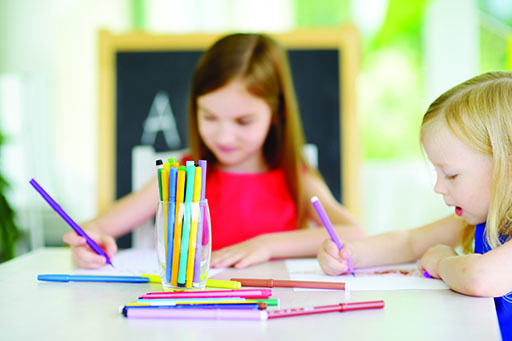4.1 Observing and listening: case study 1
In this activity, you will imagine you are listening to a conversation between three children.
Activity _unit2.4.1 Activity 2 Observing children drawing pictures
In the following transcript, Sarah, Mia and Michaela (ages 5 and 6) are drawing pictures of rainforest animals – an activity organised by their teacher. They are working independently. Their teacher is nearby, listening but not participating. As the girls work, they comment on the transformation of their drawings.
Imagine you are listening in on these conversations. What do you learn about the children from ‘eavesdropping’ on them?
Sarah: I draw the tree like THAT [draws].
Michaela: Oh, that’s a nice tree. You drawed a tree beside it.
Mia: I can’t draw a tree. I have to draw a branch. These are the leaves. We did one smaller to this yesterday.
Sarah: You can’t really see it [a bird] because of the branches. It’s hairy. In fact it has fur all around it… [continues drawing] Then a little bit of white.
Michaela: That looks a bit silly. I put the legs all wrong. When you colour it in you won’t see that bit.
Mia: I’ve got a kitten cat at home.
Sarah: I could change this [bird] into a lizard… how do you draw leopard feet?
Mia: Like a cat.
Sarah: Oh, claws!
Michaela: [laughing] I was about to do another leg, a fifth leg!
Sarah: I done a jaguar, a lizard like that, and a chameleon.
Mia: If you come to my house this summer I won’t be there. I’ll be in Serbia. My family is in Serbia and I speak Serbian.
Discussion
The girls give running commentaries as they see ideas in their heads become reality on paper, and talking together seems to help them carry out the work. They make frequent evaluative comments on each other’s work and on their own work, and Mia also offers information about her family life, her language and her summer plans. The children concentrate on the technical demands of the task, and reveal their awareness of techniques they could use. They are confident about fixing any mistakes, and they are aware of what is ‘correct’. They also refer to their previous learning. They are working independently – asking and answering their own questions without going to the teacher. The transcript highlights the amount of self-evaluation, learning and reflection which goes on as children play, talk and work.

